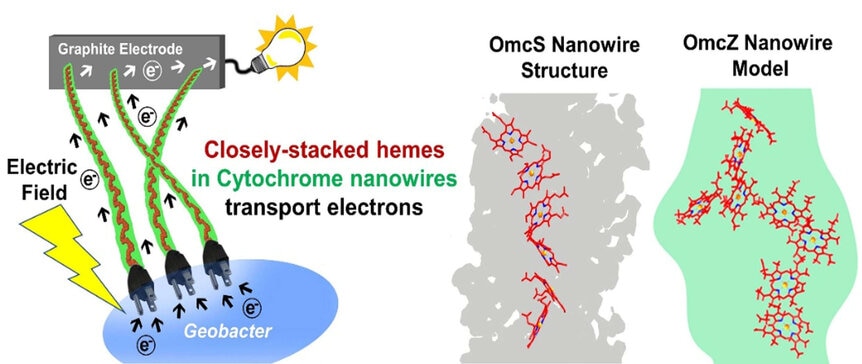Create a free profile to get unlimited access to exclusive videos, sweepstakes, and more!
The Flash has nothing on these bacteria that exhale electricity — and we could soon use that power

It sounds straight out of a superhero comic. Think of something that breathes through an electrical cord sticking out of its head can exhale currents of electricity, except this time, that creature isn’t a meta-human.
Geobacter are bacteria that DC might want to borrow from if they need new ideas for the Flash. Sure, Barry Allen can manipulate lightning and electricity, but even he can’t breathe them. These microbes produce protein filaments otherwise known as nanowires. They live in environments devoid of oxygen, and it is through these nanowires that they inhale extra electrons and then exhale them as electrical currents. Now a team of researchers from Yale University have figured out how to channel this energy into a power grid activated by — what else — a zap of electricity.
"The strength and conductivity of these nanowires, coupled with the ability of bacteria to repair themselves, could help create durable, self-healing, electronics using living cells," biologist Nikhil Malvankar, who co-authored a study recently published in Nature Chemical Biology, told SYFY WIRE.
The ability of Geobacter to send electricity over distances that are easily 100 times their size certainly sounds like something the Flash wishes he had. They are also able to pull this off while stacked on top of each other in communities called biofilms, and lurk in places many other organisms would perish, such as the dark depths of the ocean or underground. They breathe in excess electrons and get rid of them by exhaling them through these filaments. The filaments then release an electric current into the ground. These microbes can survive in extreme environments that would break down most proteins, but not those in in their nanowires.
Geobacter can also survive in highly acidic environments, and are also capable of cleaning up radioactive sludge. They can’t deactivate radioactivity, but they can convert it into a solid that can then be safely stored. Uranium has nothing on these micro-wonders.
"We directly imaged the nanowires under acidic environments and found highly stable and robust nanowires under acidic conditions that perform 100 times better than at physiological conditions," Malvankar said. "The ability to function at low pH is a unique strength of these materials. There is no other protein-based electronic material that shows such high electronic conductivity at low pH."
So how exactly do the Geobacter’s nanowires process electrons to create the electrical current they breathe out? The researchers put the bacteria under the cryo-electron microscope in Malvankar's Lab, and found that molecules of the compound heme, the non-protein component of hemoglobin, create a path within proteins inside of the nanowires. Hemes facilitate travel for electrons while the surrounding protein provides insulation. This protein, OmcS, was previously found to transmit electricity. Now it starts to get more unreal.
When the Geobacter are stimulated by an electric field, it turns out that they produce different nanowires which were not known to exist before. These nanowires use the protein OmcZ to transmit electricity.
"OmcZ nanowires are significantly more compact than OmcS nanowires and show increased stacking of metal-containing heme molecules that could bring them closer for more efficient electron transmission," Malvankar said. "Bacteria in these electricity-producing biofilms experience an electric field that stimulates production of nanowires made up of the protein OmcZ, which are 1,000 times more efficient than the OmcS nanowires."
Deleting the gene for OmcS actually makes nanowires more conductive. The power of OmcZ inspired Malvankar's team to create a power grid easily turned on with an electric jolt. Another almost supernatural thing about these bacteria is that they are self-healing. With so many electronics that end up in junkyards and landfills after they burn out, the ability of Geobacter to produce electricity and repair itself is revolutionary.
"Microbial nanowires offer promise for achieving a new class of electronic materials that could exhibit the electrical and optical properties of metals and semiconductors, but retain mechanical properties and demonstrate versatile functionalities of proteins to bring together synthetic biology with semiconducting technology," Malvankar said.
The Flash only wishes he had these things as sidekicks.



























